Running N scale trains too fast: Several years ago the N scale Enthusiast national convention came to town, and I was very pleased that, over the course of one day, four busloads of N scalers from all over the world came to my house to visit my layout. My friends Andy Sperandeo and Gordy Spiering ran trains for me so I could concentrate on hosting. Both are avid and experienced operators.
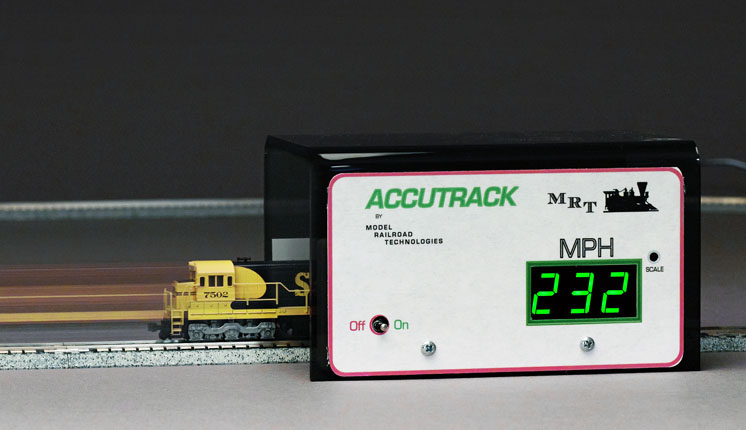
I couldn’t help but notice that some visitors were intrigued by how slowly Andy and Gordy ran their trains. The visitors would ask me how fast the trains were going, and the answer I’d give was around 25 mph, which I’m confident was correct, and as I’ve developed a good feel for N scale train speeds.
I think some visitors were interested because they’d never run trains so slow or seen it done. I think the speeds made a few others antsy. They just really wanted to see them go faster and would like to have grabbed the throttles and turned the trains loose.
It doesn’t come naturally. Most model railroaders run trains too fast, and most non-model railroaders run them even faster. (This, of course, is only true if you believe that model trains ought to go scale speeds.) Except for kids, who just naturally want to see how fast they can make anything go (Lionel didn’t make Magne-Traction just for the heck of it), most folks who are running trains too fast don’t realize they are doing it. It looks right to them.
And of course running slow enough in N scale means running really slow, because our trains are so small. In school we learn that traveling 88 feet per second (the approximate length of an auto rack car) is 60 mph, which sounds fast. But line up five auto racks and take five seconds to pass them and you’ll find that it’s pretty slow. And of course if you wanted to go 30 mph, you’d take 10 seconds.
You could use a watch to time the interval for one passing car, but the result would be woefully inaccurate. Set up a string of four or five 89-foot flatcars or auto racks on a seldom used spur, though, and you’d have a pretty effective speed trap.
How fast are N scale engines? It’s no secret that most N scale engines right out of the box can really scoot. In his review in the November 2014 issue of MR, Steve Otte clocked a new Kato F3 at 210.5 mph on 12 volts DC. The prototype could do 102, tops. (And actually 210 is on the low side for an N scale engine).
Quite a few N scalers think that a locomotive ought to run top scale speed at top voltage. I’ve talked to Kato representatives at shows about this and they really don’t buy that. (For that matter, I don’t either – just don’t open the throttle all the way.)
One Kato rep explained that for the sake of durability, they don’t want to use gears with even finer teeth. They didn’t say so, but I think another reason is that they know a lot of customers, especially kids, want to go fast, and in Japan kids are far and away the major market for N scale.
I’ve watched Japanese youngsters run their trains on the layouts in Kato’s Tokyo showroom, and they don’t poke along – of course their prototypes don’t either.
I found this is such an interesting phenomenon. Japanese N-scalers often have very little space for a layout, so they come to the showroom with a case of equipment, set up a train – usually a pretty long one – and run it for free.
I know for myself there are times I don’t want to run prototypically slow. Say I’m trying to diagnose or correct a
problem. If the locomotive has proceeded 20 feet down the track, I don’t want a long wait to bring it back to me so I can repeat my experiment.
How fast do real trains run? Most major railroads in the United States operate on Class 4 track, as determined by the Federal Railroad Administration. The speed limits on such track are 60 mph for freight trains and 80 mph for passenger trains. There is some Class 8 track on the Northwest Corridor where the limits are 135 and 150 mph.
Keep in mind, though, that for these kinds of speeds we are talking straight, level, well-manicured track. Trains seldom go so fast on a stretch of mountain railroad like my Tehachapi Pass, even though it’s extremely well maintained Class 5.
I have a 1987 Southern Pacific timetable that limits freight train speed in the pass to 65 mph. In reality, trains never go that fast because speeds on curves are usually restricted to 25 or 35 mph and there are a whole lot of curves. Typical trains could never get up to 65 before they had to start slowing down again.
Generally on a model railroad, slower is better, because we don’t have far to go, and going slower can make the layout seem larger.
The photo here shows my Model Railroad Technologies Accutrack speedometer. I bought it with two goals in mind: speed-matching DCC locomotives and scale speed training for me and anyone else who could use a little. Only a half-dozen passes will give you a good feel for what scale speed looks like – and what it looks like is slow.
This article originally appeared in the September 2015 issue of Model Railroader – Ed.






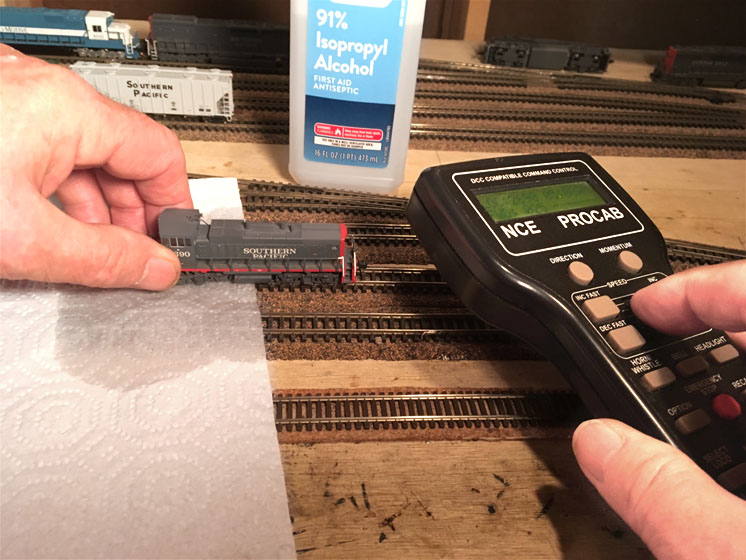
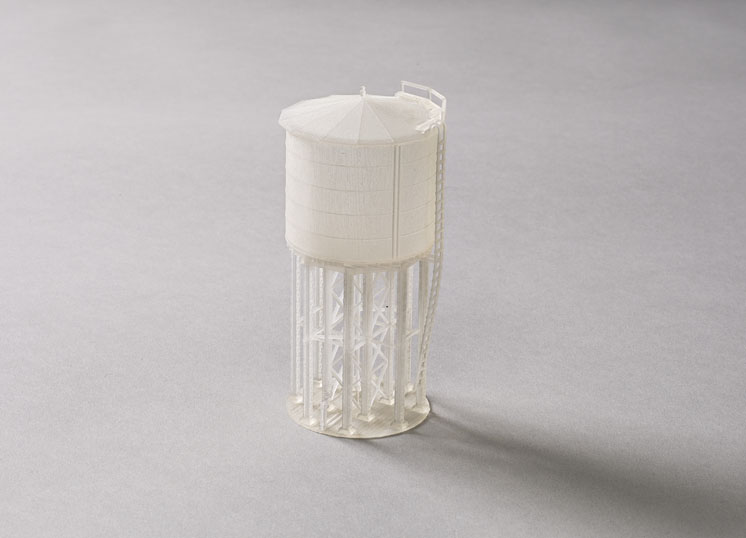
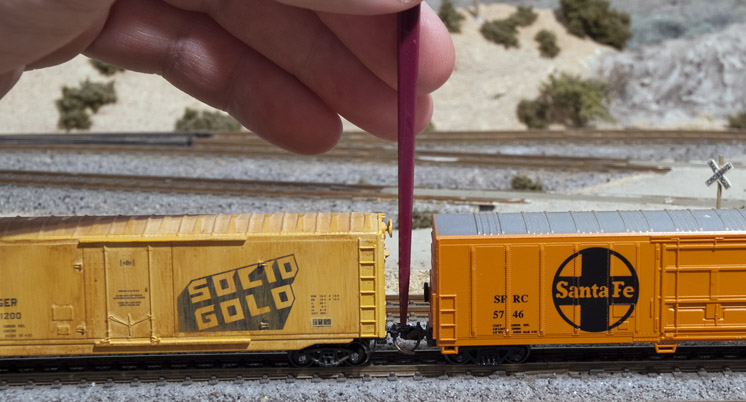
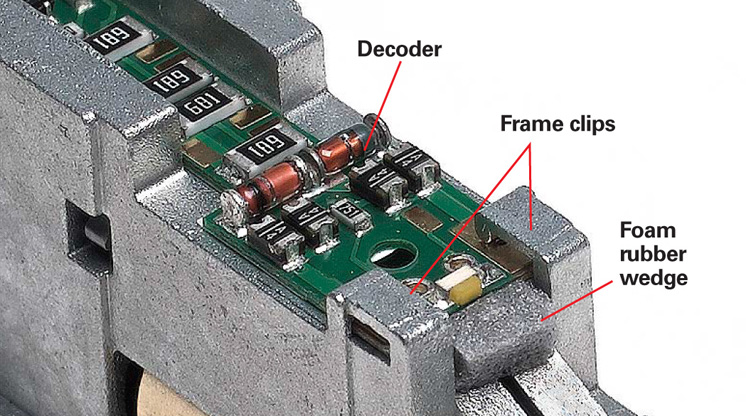




Does the ACCUTRACK device work with HO scale installations??
The building I work in is next to a UP line and we're at one end of a 5 mph curve (old line that literally runs through residential areas,) which makes the trains seem to crawl around the curve. That's as real as it gets. We should have equipment that can do that on the layout.
I wrote an article in the NMRA Scale Rails Magazine (July 2010 issue) on estimating model train speeds. It got dissed by readers in the next issue as being too complicated. What they didn't get is that their "simpler" methods were only for HO scale, and my article attempted to set down the formulas for any scale. In fact, my article arrived at the same "simpler" formulas for HO scale. One reader even commented that dividing was too hard. I suspect that the readers who commented have trouble using DCC as well. Your article is great, Jim, I'd be interested in your opinion of my "complicated" article.
Many model railroaders tend to operate their models too fast. This is true here in the UK where trains (especially passenger ones) travel at a higher speed than in North America, and it is also true in Canada where I lived for more than 30 years. Prototypical speeds do seem slow to the operator at first but one soon gets used to them, and then they seem right.
Fortunately for me, when my 3 year old nephew was operating my layout he slowed the trains down to less than prototypical speed to watch the rods etc. moving! That's my boy!
Thanks Model Railroader Magazine and Jim Kelly for this article. Two years ago I purchased an N scale train set because it was the only size that would fit on my coffee table. I didn't put it up last year and actually regretted the purchase because I couldn't keep it on the tracks. After reading this article I realize I was probably just running it way too fast. I'll put it up this year and run much slower and see what happens. Thanks again!
Good article! I've run at prototypical speeds for years now and seeing others who go all out gets under my skin. My only exception is when I'm testing, troubleshooting or breaking in a new locomotive. I expect kids visiting my layout to ask 'how fast can it go?', but not adults. It's a learning process.
Allan
Great article. Makes you think about speed in a realistic way and lists a good tool to check speed.
Since I operate a layout in very limited space (island style, single track main line is just about 25 ft) and because I nevertheless want to run some longer trains I have come to terms with that in my early modeler days already. So I typically run an ore train consisted of 3 4-axle locos with about 25 ore cars with a scale speed of 20 mph. Even so, a full round only takes just a little about 2 minutes. A short local powered by a single loco and traveling with 35 mph will take slightly above a minute, and that's as fast as it can go. For this reason I just can't operate Kato locos, the new Walther's are the best for my purpose.
232 MPH? That might get you the pole position/front row for next years Indy 500! Thanks for the interesting article on scale train speeds. I model N scale so I try to keep these things in mind when I run my trains.
Jeff B
Great article! I hadn't really thought about realistic speed. A quick calculation shows that 25 mph in N Scale is 2.75 inches per second, or just shy of the length of a single car. That should serve as a good rule of thumb for more realistic operation.